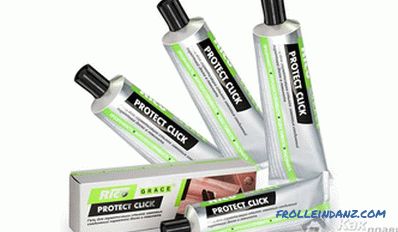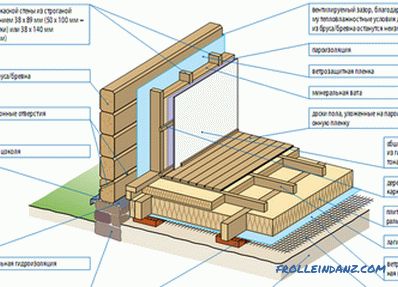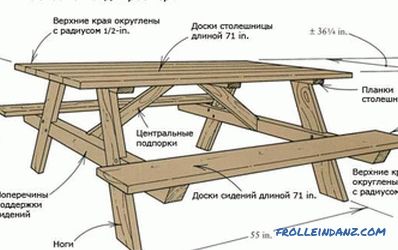It often happens that when setting up a well, I want to equip it with additional equipment, but in order to have such an opportunity, you will have to purchase a very expensive industrial one, or make a caisson for a well with your own hands, the dimensions of which will allow you to place everything you planned. Another reason is possible - the desire to do everything yourself. In this case, it is not necessary to make a large caisson.
The caisson is designed not only for the convenient location of various devices in it, but also to protect the plumbing system from freezing.
To this end, it is placed in layers of soil that do not freeze through and tightly closed with a lid, in order to avoid cold air getting inside.
Preparatory work
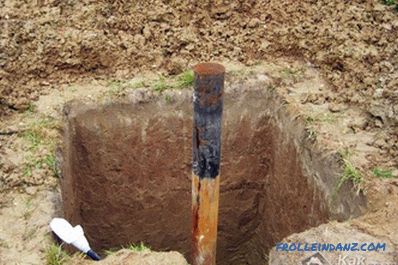 Pit around the pipe
Pit around the pipe
First you need to dig a hole for the caisson , the form and dimensions of which depend on its dimensions. In the factory, the caisson is made of plastic, or metal, and, as a rule, its dimensions are small. Different material can be used for the caisson:
- Concrete rings.
- Concrete.
- Brick.
- Metal.
- Polymer sand basis.
Let us dwell on them in more detail.
Depending on what the caisson is, you need to dig a hole under it, on the basis that only the hatch should look out above the ground and the body should be left under the ground.
Caisson from concrete rings
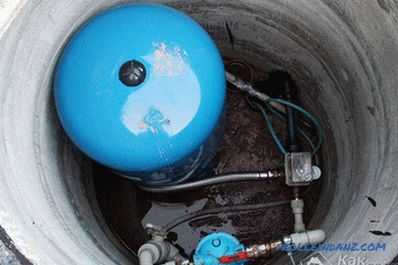
The bottom is laid with concrete level, and after it has thoroughly grasped, you need to wash the bottom of the fallen clay. Then draw a contour to install the ring, and on this markup, apply cement mortar, in order to put the ring in it. On top of the first ring, the solution is again applied and the second is put.
If the clay falls on the applied solution during the installation of the next ring, it must be removed. To do this, you can fix the concrete product, putting a board under it. After removing the clay, the solution is leveled, and the upper ring is lowered.
After installing the rings, thoroughly seal the seams and make a well out of bricks, such that the hatch is 15 cm above ground level.
Concrete caisson
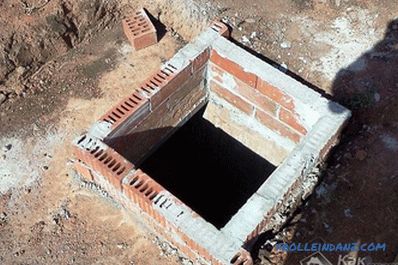
There is nothing in his technology of making new and unfamiliar. Standard set:
- Dig a hole.
- Make the formwork.
- Install reinforcement grating.
- Pour concrete.
- Make a brick head of brick.
Everything is done according to the same principle as the cesspool. The difference is that you need to make sure in advance that the hole for the supply of pipes and electrical cable remains, and the upper plate must be below ground level. A warmed hatch is installed on top, and a concrete caisson is at your service.
Brick caisson
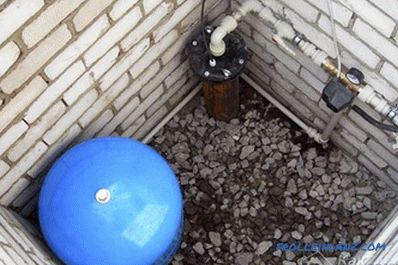
For making such a caisson, a used brick is most often used, but this is at the discretion of the owner. As for the pit, there are 2 options for its size:
- Clearly shaped, taking into account the fact that the brick will be flush with the wall.
- Larger than the caisson. In this case, smooth walls are laid, and after the mortar has dried, the voids are filled with soil.
The first option is less time consuming, since you have to work less with a shovel, but there are still empty voids between the wall and the masonry into which rainwater will fall.
For a small caisson, you can not make a concrete cover. It is enough to narrow the hole upwards, shifting the brick towards the center when laying.
The turned neck must be closed with a warmed hatch.
Polymer sand base
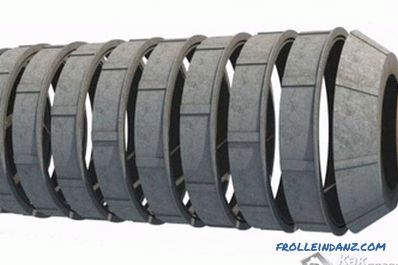 On a polymer-sand basis
On a polymer-sand basis
More simple, and a less expensive option is the use of precast caisson made on polymer-sand basis. This material:
- Resistant to environmental influences.
- Does not enter into a chemical reaction.
- Durable.
- Inexpensive.
- Differs in ease of installation.
- Large diameter rings.
No technique is needed for mounting the rings, and their design allows you to assemble a caisson of the correct form, moreover, completely sealed. In addition, it does not need additional waterproofing, and the bottom and hatch are included.
Metal caisson
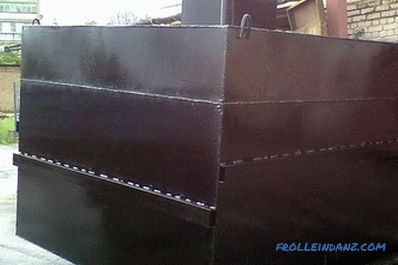
If you know firsthand the welding work, then you can make a metal caisson. Its design should be with stiffeners, so that the ground does not push it inside.
To install such a structure, you will need a crane, but first it must be protected from moisture, processed both from the outside and from the inside.
Such a caisson will not be cheap, given the cost of metal, electrodes, primer with painting, and the operation of equipment. In addition, this product will need to be periodically painted from the inside. For this reason, metal caissons are unpopular.
We will not say what is best for you, since every craftsman decides for himself how he should do better, and this review will only help to make the right decision.
Video
This video tells about the advantage of a well made of polymer-sanding rings.

